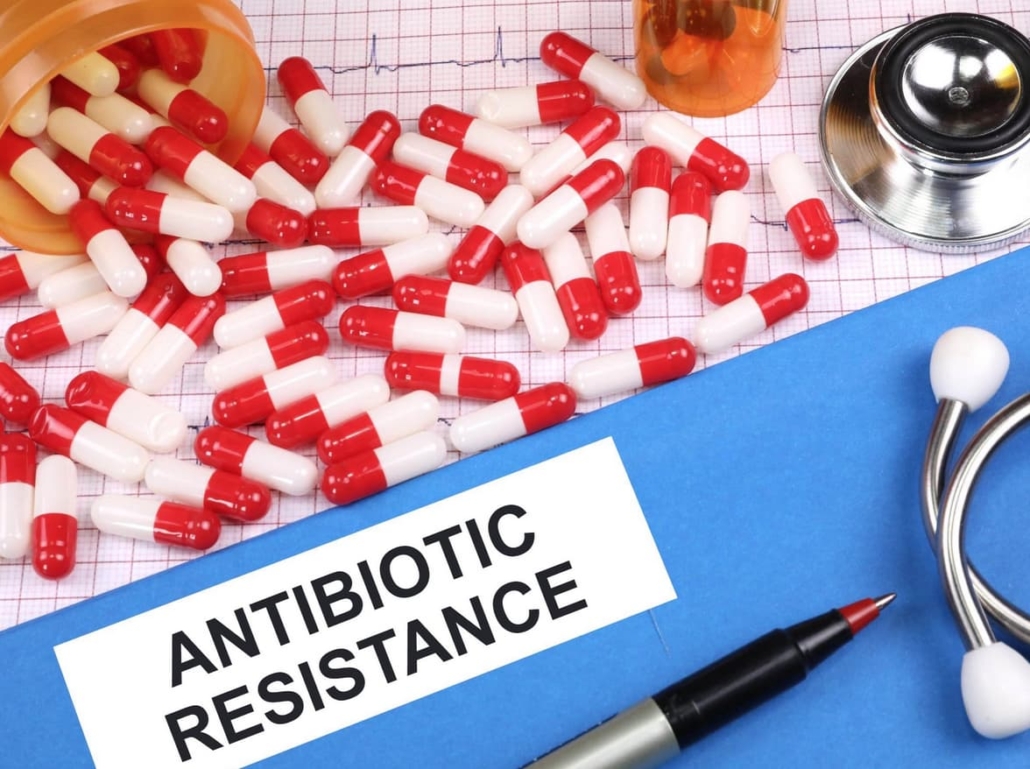Climate crisis projected to fuel ‘alarming rise’ in antimicrobial resistance by 2050
Current climate change trajectories could contribute to an increase in the global burden of antimicrobial resistance (AMR) by 2050, according to new research published in Nature Medicine. The study projects that under the worst-case climate scenario where global temperatures rise by 4-5°C, AMR could increase by up to 2.4% globally, with disproportionate impacts on lower and middle-income countries. The findings highlight the need for sustainable development strategies beyond simply reducing antibiotic use.
Climate change and socioeconomic factors contribute to AMR spread
The increasing threat of antimicrobial resistance represents one of the greatest challenges to global health. In 2021, bacterial AMR was responsible for an estimated 1.14 million deaths globally, with this figure projected to increase to nearly 2 million by 2050. While much of the focus in addressing AMR has centred on reducing excessive antibiotic use, new research suggests that climate change and socioeconomic factors may play equally significant roles in the spread of resistance.
Researchers led by Lianping Yang from Sun Yat-sen University in China have conducted one of the most comprehensive analyses to date of the factors influencing AMR on a global scale. Their study, published in Nature Medicine on 28 April 2025, analysed 4,502 AMR surveillance records encompassing 32 million bacterial isolates from 101 countries collected between 1999 and 2022.
The team investigated how various environmental and socioeconomic factors might influence the prevalence of six key drug-resistant bacterial pathogens, including third-generation cephalosporin-resistant and carbapenem-resistant strains of Escherichia coli, Klebsiella pneumoniae, Acinetobacter baumannii, and Pseudomonas aeruginosa.
Environmental factors linked to AMR
The study identified several environmental factors associated with increased AMR prevalence. Fine particulate matter (PM2.5) pollution showed a positive correlation with AMR, with each unit increase associated with a 2% higher odds of resistance. Surface runoff from precipitation was linked to a 22% increase in AMR odds per 100mm increase, while rising temperatures were specifically associated with increased prevalence of carbapenem-resistant A. baumannii.
“Our quantitative analysis connects AMR with a range of environmental factors associated with climate change,” the authors write. “Rising temperatures are among the most tangible effects of climate change, and the impact of ambient temperature on AMR was first observed in studies conducted in the United States and Europe.”
The researchers note that PM2.5 particles may serve as vectors for drug-resistant bacteria or genetic material, facilitating transmission between environmental reservoirs and human hosts.
Socioeconomic factors equally important
Beyond environmental considerations, the study found that socioeconomic factors played a crucial role in AMR development. Higher out-of-pocket healthcare costs were associated with increased AMR prevalence, while greater health expenditure as a percentage of GDP and better immunization coverage were linked to lower AMR levels.
The researchers’ analyses revealed that sustainable development initiatives could potentially reduce global AMR prevalence by 5.1% by 2050 compared to baseline projections. This reduction would be more than twice as effective as simply reducing antimicrobial consumption, which is projected to lower AMR by only 2.1%.
Disproportionate impact on lower-income countries
One of the most concerning findings was the projected disproportionate impact of climate change on AMR in lower and middle-income countries. Under the worst-case climate scenario (SSP5-8.5), the researchers project that by 2050, AMR could increase by:
- 0.9% in high-income countries
- 1.6% in upper-middle-income countries
- 4.1% in lower-middle-income countries
- 3.3% in low-income countries
“Under the worst-case scenario, compared with a sustainable low-emission pathway, AMR prevalence is projected to increase by 0.9% to 4.1% by 2050 in different income-level countries,” the authors report.
Sustainable development as a key intervention
The researchers identified specific sustainable development initiatives that could significantly reduce AMR burden. Reducing out-of-pocket health expenses showed the greatest potential impact, with a projected 3.6% reduction in AMR prevalence by 2050. Comprehensive immunization coverage could contribute a 1.2% reduction, while increased health investments and universal access to water, sanitation and hygiene (WASH) services would offer smaller but still meaningful reductions.
“Particular attention should be directed toward LMICs, which bear substantial AMR burdens but have limited economic resources,” the authors conclude. “Addressing the complex interplay between climate change, human activities and AMR demands sustained research, informed policy development and the implementation of targeted interventions.”
The study adds important evidence to support the ‘One Health’ approach advocated in the 2024 United Nations General Assembly political declaration on AMR, which recognises the interconnectedness of human, animal and environmental health in addressing antimicrobial resistance.
Reference
Li, W., Huang, T., Liu, C., et. al. (2025). Changing climate and socioeconomic factors contribute to global antimicrobial resistance. Nature Medicine. https://doi.org/10.1038/s41591-025-03629-3


